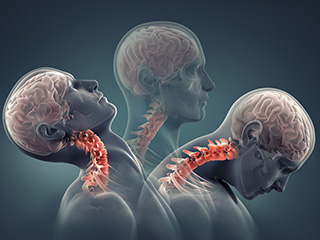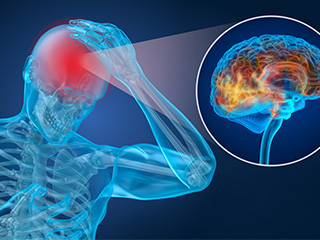Whiplash and Concussion — How Are They Different?
Everything You Need to Know About Whiplash Versus a Concussion
Head and neck injuries occur very often as the result of a car accident. There are different types of head and neck injuries, but two of the most common types are whiplash and a concussion. While many of us are familiar with concussions and whiplash, we’re not aware of the differences between the two. And understanding the differences can have a significant on how and where to pursue treatment options.
Whiplash vs. Concussion — an Overview
In a nutshell, whiplash is like a $100 bill and a concussion is like a stack of a hundred $1 bills. Whiplash immediately causes an extremely serious injury. A concussion, or mTBI (mild traumatic brain injury), isn’t too serious on its own. However, the cumulative effects of multiple concussions could cause a serious injury, like the mysterious chronic traumatic encephalopathy (CTE) that affects many professional athletes.
Recent data from the CDC has found there were over 64,000 TBI-related deaths in the United States in 2020, many of them related to car accidents. That’s about 176 TBI-related deaths every day.
In both cases, a pre-existing medical condition, like a prior head injury, is a game-changer. CTE (Chronic Traumatic Encephalopathy) is a good example. No one is sure how many concussions trigger this condition, which is usually fatal. However, it’s certain that each mTBI, no matter how “mild” it is, moves a victim one step closer to a fatal condition. Maximum compensation is usually available in these cases, thanks to an obscure legal doctrine known as the eggshell skull rule.
Any head injury can cause memory loss, personality changes, loss of function, and other serious symptoms. Frequently, since head injuries are permanent, these symptoms can be permanent as well.
What is Whiplash?

Whiplash is a motion-related head-neck injury. Wrecks cause the head to violently snap
forwards and backwards, or sometimes from side to side. Since the neck is quite
vulnerable, even a relatively low-speed wreck could cause this injury. Like many other head injuries, whiplash is difficult to diagnose and treat. This soft tissue injury doesn’t appear on X-rays and other traditional diagnostic tests. Additionally, initial whiplash symptoms, like soreness and disorientation, often mimic accident shock, a condition which goes away on its own, given rest and fluids.
Therefore, many doctors don’t see that the motion has damaged nerves, mostly in the cervical spine. This nerve damage soon causes pain that radiates from the shoulders to the wrists. This pain gets so bad that victims’ arms are effectively paralyzed.
At this point, whiplash is much more difficult to treat. Doctors may need to surgically repair the damaged nerves. Even then, the pain and lost function don’t go away overnight. A physical therapist must work with a victim for several months, or even longer, before that happens.
What is a Concussion?

mTBIs are usually motion-related as well. According to popular myth, the brain fits snugly in the skull, like a hand in a glove. That’s not true. The skull is basically a water tank full of cerebrospinal fluid. This fluid holds the brain, and the narrow brain stem, in suspended animation.
We talked about motion’s effects on the brain stem (cervical spine) above. Now, let’s look at the effects of motion on the brain itself.
When a victim’s head jostles, the brain slams against the skull. At extremely low levels, that’s a good thing. Many people pace to think more clearly and many boxers jump up and down between rounds to gear themselves up.
However, there’s nothing “low level” about a vehicle collision. That’s especially true if victims also hit their heads on seats or airbags.
One-time concussion effects usually wear off in a few hours. A lot can happen in a few hours. A victim might have a big presentation at work or need to take certain medication exactly at certain times. Furthermore, as mentioned, each mTBI moves victims closer to CTE.
That stack of $1 bills analogy we used earlier isn’t exactly correct. It’s more like five ones, three fives, four tens, and two twenties. Each concussion is worse than the last one. The aforementioned eggshell skull rule protects multiple concussion victims who suffer unusually bad mTBIs in car crashes.
Can I Get Both at Once?
Sadly, the answer to this question is a resounding “yes.” In fact, since the same motion causes both injuries, it’s quite rare for people to get concussions without whiplash.The good news is that, if doctors identify these conditions quickly, the treatment is the same for both. Brain injury physical therapists train uninjured parts of the brain to assume lost functions. This process is effective, but the road to recovery is long and winding. Delayed diagnosis could mean risky and invasive brain surgery, an outcome which everyone wants to avoid.
All we do is fight for injured victims. And we do not accept defeat.
(512) 996-6369
help@dfoxlaw.com
Address
206 W. Main Street #108, Ste B, Round Rock
TX 78664
